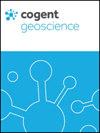Advantages of unmanned aerial vehicle (UAV) photogrammetry for landscape analysis compared with satellite data: A case study of postmining sites in Indonesia
引用次数: 40
Abstract
Abstract This study presents the advantages of detailed landscape analysis by UAV (drone hereafter) photogrammetry compared with satellite remote sensing data. First, satellite data are used for generating a coarse-scale land use/land-cover (LULC) map of the study region using conventional GIS techniques. The Advanced Land Observation Satellite-2 (ALOS-2) Phased Array L-band Synthetic Aperture Radar-2 (PALSAR-2) L-Band backscattering data are processed with a multilayer perceptron (MLP) supervised classification for generating a categorical map. The satellite-derived classification map resulted in eight general land-cover types with a ground resolution of 7.5 m, providing a moderate-resolution representation of the island landscapes. Second, the drone’s image data are used to collect ground survey information and microscale information of the local site by implementing a structure from motion (SfM) technique to develop mosaicked orthorectified images of the sites. The orthophoto and digital surface model (DSM) derived from the drone-based data had resolutions of 0.05 m and 0.1 m, respectively. The SAR-based LULC map showed an overall accuracy of 78.1%, and the drone-based LULC map had an overall average accuracy of 92.3%. The subset area of the SAR map was compared with the drone-based map and showed average Kappa statistics of 0.375, demonstrating that satellite data cause challenges in correctly delineating the local land environment. The terrain information generated by the SfM method provided a good representation of the topography showing the drastic changes in the environment. The results indicate the usefulness of drone-based landscape analysis for future land-use planning at a local village scale.无人机(UAV)摄影测量在景观分析中的优势与卫星数据的比较——以印度尼西亚采矿后场地为例
摘要本文介绍了利用无人机(以下简称无人机)摄影测量技术进行景观细部分析相对于卫星遥感数据的优势。首先,利用卫星数据利用传统GIS技术生成研究区域的粗比例尺土地利用/土地覆盖(LULC)图。利用先进陆地观测卫星2号(ALOS-2)相控阵l波段合成孔径雷达2号(PALSAR-2) l波段后向散射数据进行多层感知机(MLP)监督分类处理,生成分类地图。卫星衍生的分类地图产生了八种一般的土地覆盖类型,地面分辨率为7.5米,提供了岛屿景观的中等分辨率表示。其次,利用无人机的图像数据收集地面调查信息和局部站点的微观尺度信息,通过实现运动结构(SfM)技术开发站点的拼接正校正图像。基于无人机数据的正射影像和数字曲面模型(DSM)的分辨率分别为0.05 m和0.1 m。基于sar的LULC地图总体精度为78.1%,基于无人机的LULC地图总体平均精度为92.3%。将SAR地图的子集面积与无人机地图进行比较,结果显示平均Kappa统计量为0.375,表明卫星数据在正确圈定局部陆地环境方面存在挑战。SfM方法生成的地形信息能很好地反映地表环境的剧烈变化。研究结果表明,基于无人机的景观分析对未来村庄尺度的土地利用规划是有用的。
本文章由计算机程序翻译,如有差异,请以英文原文为准。
求助全文
约1分钟内获得全文
求助全文

 求助内容:
求助内容: 应助结果提醒方式:
应助结果提醒方式:


